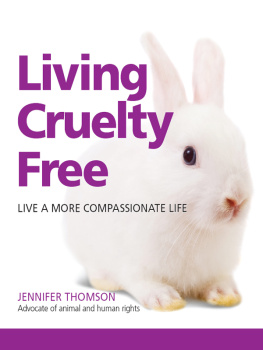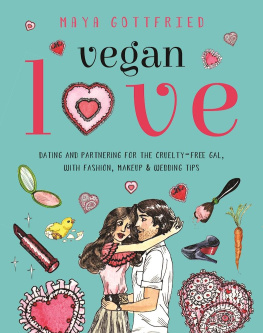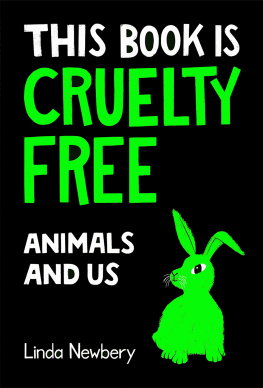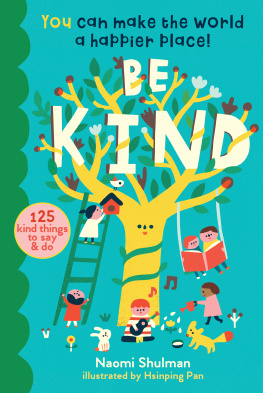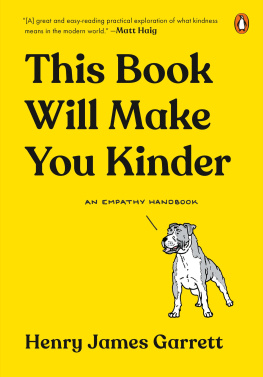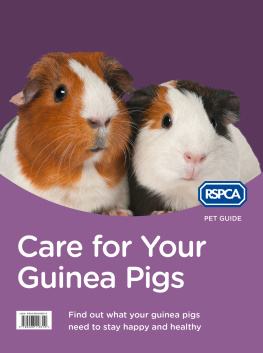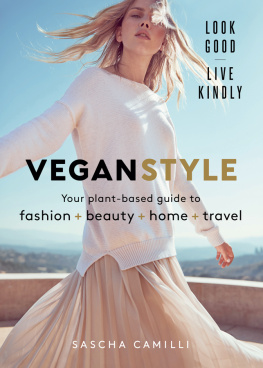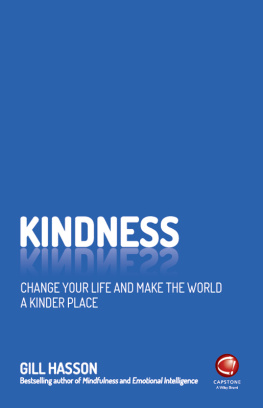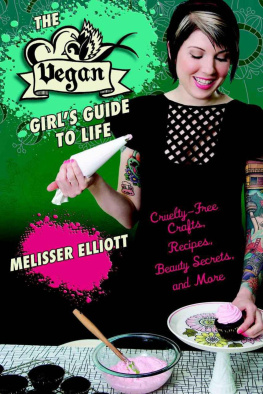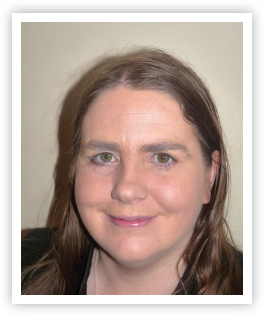
The author
Jennifer Thomson has been a vegetarian for 25 years and has always tried to live a cruelty free life. She wants to share the tips shes picked up along the way and blogs at http://greatestguidetolivingcrueltyfree.blogspot.com as well as tweeting as veggiegirl2011.
Living Cruelty Free is a one stop shop for living a more compassionate life. This is the book Jennifer wishes had been available to her.
Jennifer is a freelance writer and author. She lives on a beautiful Scottish island with rescue dog Benjy, her partner John and hundreds of seagulls, who wake her up every morning.
Living
Cruelty
Free
Living Cruelty Free
Published by:
Greatest Guides Limited, Woodstock, Bridge End, Warwick CV34 6PD, United Kingdom
www.greatestguides.com
Text copyright Jennifer Thomson, 2012.
All rights reserved. No part of this publication may be reproduced, stored in a retrieval system, or transmitted in any form or by any means, electronic, mechanical, photocopying, recording or otherwise, without prior written permission from the publisher, except for the inclusion of brief quotation in a review.
Every effort has been made to ensure that this book contains accurate and current information. However, neither the author nor the publisher shall be liable for any loss or damage suffered by readers as a result of any information contained herein.
All trademarks are acknowledged as belonging to their respective companies.
This ebook is licensed for your personal use only. It may not be re-sold or given away to other people. If you would like to share this ebook with another person, please purchase an additional copy for each person you share it with. If youre reading this ebook and did not purchase it, or it was not purchased for your use only, then please purchase your own copy to ensure you are not in breach of copyright.
Thank you.
eISBN 978-1-907906-62-6
Acknowledgements
I would like to thank the following for their invaluable help with this book.
My partner John, who helped me with the picture research, and who acted as a soundboard for content ideas.
My fellow tweeters on Twitter, who helped clarify in my mind what needed to be included in this book.
My friends on Facebook, who also helped me decide on the content.
All of the charities working for the welfare of people and animals who gave me permission to use quotes and offered me advice. Special thanks to the BUAV, for allowing me to use the world famous cruelty free Leaping Bunny mark.

Contents
A few words from Jennifer
The very fact youve picked up this book means you want to live a more compassionate lifestyle; one that is kind to people and animals. This could be because you are a vegetarian or vegan and want to avoid things that involve the harming or killing of animals, whether its for meat or cosmetics.
Or, maybe you are a meat-eater and simply want to ensure that the animals that end up on your plate had a good quality of life before they died and were allowed to roam freely and feel the sun on their faces.
Perhaps you are simply looking to be a more ethical shopper, shunning goods made in sweatshops or using exploited child labor.
Yes, trying to live a cruelty free life means human beings are treated well too just as Ghandi said, you can judge a society by how it treats animals, we can also judge our society by how people treat their fellow human beings.
No matter how far you want to go in the pursuit of a more compassionate lifestyle, the pages of this book will arm you with the facts you need to make an informed decision about the things you buy and the things you eat.
Remember, together, with small steps, we can all make the world a kinder place to live.
How to read this book
This book can be read cover to cover and as a reference guide to dip into again and again.
If you have any questions, please feel free to contact me through my blog at http://greatestguidetolivingcrueltyfree.blogspot.com
Jennifer

What Is
Cruelty Free?
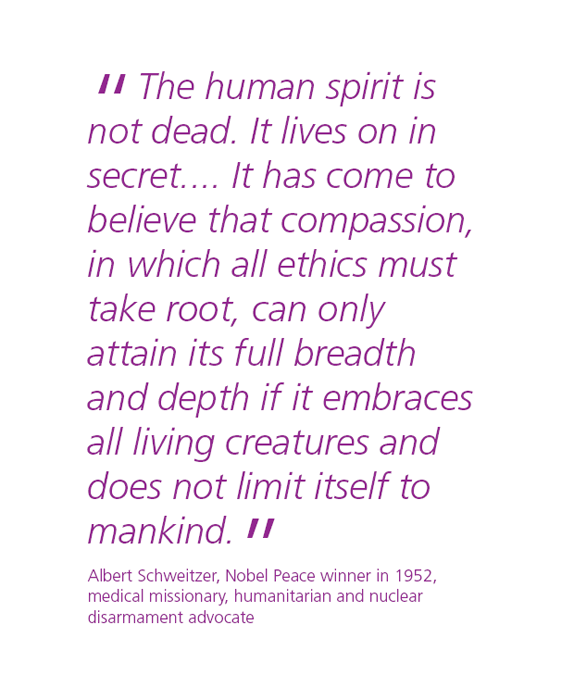
Chapter 1
What Is Cruelty Free?
WHAT IS CRUELTY FREE?
We all think we know what it means, but sometimes it can be difficult to define.
For the purposes of this book, living cruelty free is defined as causing no harm to animals or humans.
This can mean a number of things:
Not buying food that was produced by causing unnecessary suffering to animals, such as placing animals in small, darkened crates where they live out their short lives without any contact with their own kind (this is how calves used to make veal live to ensure their meat is pale).
Not buying products that are made from the labor of workers who are not adequately paid for the work they do or treated fairly. This can mean they live in squalid, unsanitary conditions (such as having no fresh water) and are not paid a fair wage for the work they do.
Not buying cosmetics that are tested on animals. Many of these tests are completely unnecessary and have been done countless times before, so they already know what the results will be.
Not buying things that were made using obvious animal cruelty. This can mean not buying things like pillows and bedding that contain duck feathers or down, which is often obtained by the plucking of animals whilst they are still alive, without anesthetic, and fur.
Not buying clothing made by child slave labor. Firms have been found using child labor to make everything from dresses to footballs. Generally, these children never go to school.
Note The key thing about being cruelty free is that you can go as far as you want. Every little helps.
WHY DO PEOPLE DECIDE TO SHOP CRUELTY FREE?
You may be a vegetarian or vegan and want to avoid all products that are by-products of the slaughterhouse, such as gelatin (also spelt gelatine) in candies (sweets) and lambskin and products that are tested on animals.
Even if youre not a vegetarian or a meat reducer, without even realizing it, you may have already taken steps to become a cruelty free shopper. Perhaps you have a conscientious objection to buying certain products. Say you love horses and avoid anything that contains horse hair or anything that is made with deerskin because you think of Bambi. Or, maybe you dont eat certain things because of the cruelty involved or because they remind you of the animal it came from.
Whatever the reason, there is a rise in the number of consumers who care how products are made and how they are sourced. Thats why products carry labels saying they are cruelty free or ethically sourced, or are made by workers who are paid a fair wage. If these guarantees werent demanded by the public, they wouldnt be there, as businesses simply want to make as much money as possible. They may herald their ethical policies, but, in most cases, they dont want to change the world. They just want to cash in on new trends in consumer behavior.
Next page
